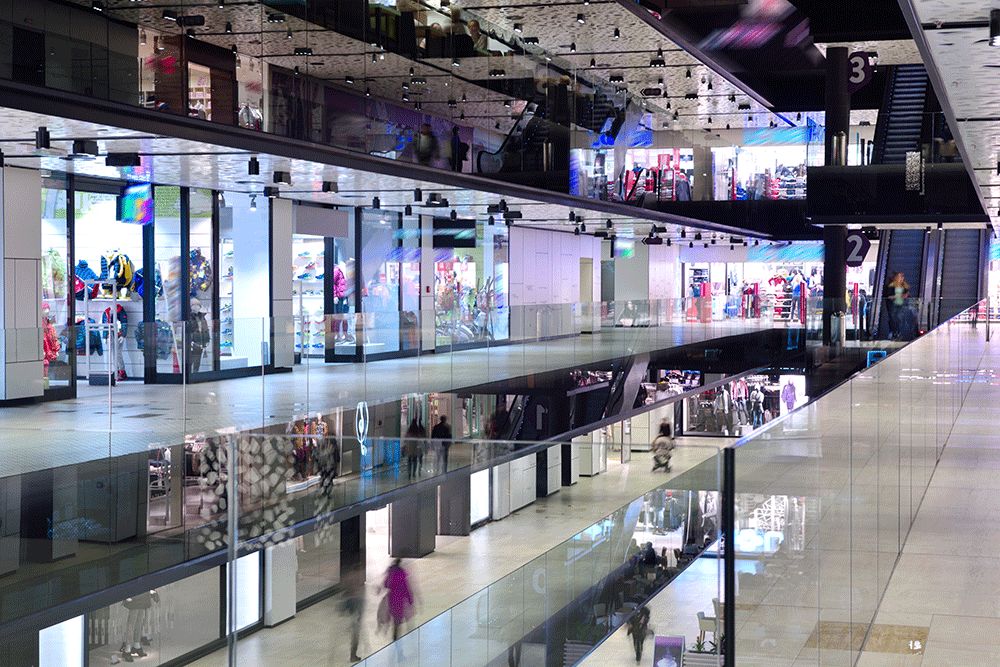
Over the past few years, the challenges facing the retail industry have been greatly publicised. With intense competition from new online only entrants, years of sluggish economic growth and heavily debt-financed business models, creating an environment in which we have seen a number of major High Street retailers fail. In 2019 alone, we saw Bonmarche, Clintons, Coast, Debenhams, Jack Wills, Jessops, Karen Millen, Mamas and Papas, Mothercare and Thomas Cook – either disappear, undergo major restructuring in pre-pack administration deals or become insolvent and the brand rights sold to other retailers.
In the pandemic ridden year of 2020, we have already seen similar fates for Antler Luggage, Beales, Brighthouse, DW Sports, Go Outdoors, Laura Ashley, Oddbins, TJ Hughes and Victoria’s Secret.
Almost all of these High Street retailers or brands have gone through pre-pack administration deals, which have seen major rounds of store closures and trade creditors largely unpaid, with major stakeholders and landlords facing renegotiated deals. Go Outdoors, for example, were bought by their existing owner JD Sports to be restructured, with unsecured creditors expecting to see only 1p in the pound.
Alarmingly but not surprisingly, the knock-on effect of so many retailers seeking lower rents as part of pre-pack administration deals has been a financial impact on landlords, including Intu properties who entered administration in June. Intu owns and manages some of the UK’s largest shopping malls, where retailers house their major stores, but carries total debts of over £4.5 billion.
While many businesses are failing, others are benefitting from the situation. Mike Ashley’s Sports Direct empire has recently bought House of Fraser and has enjoyed several years of incorporating well-known brands into its portfolio. The group (now renamed as Frasers Group) has purchased House of Fraser, Evans Cycles, Jack Wills, GAME and key assets from the DW Sports Fitness business since 2018, to add to its wide list of brands including Agent Provocateur, Everlast, Karrimor, Lonsdale and North Face.
Boohoo have also been on the acquisition trail. Following major success in the online channel, they have further expanded their offering by purchasing Oasis and Warehouse, to add to their Karen Millen and Coast buys earlier this year. It is worth noting that Boohoo has acquired the online brands only, leaving the High Street stores to close, totalling over 120 stores and around 600 concessions. With reported cash to spare, more purchases might follow and Boohoo will need to build a business capable of incorporating the new brands successfully. The more mature demographic of the new brands’ customers might serve to improve customer loyalty and offset the criticism of Boohoo as a ‘fast fashion’ retailer. Certainly, there will be implications for Boohoo’s sales processing and customer services teams, who will need to adapt or replace legacy systems and maintain service levels to loyal customers who stay with the brands.
Survival of the fittest
With such a bleak sector landscape, how can High Street and online retailers keep their customer service operations functioning well? It might not seem a big priority to financial decision-makers, but ultimately retailers’ survival depends on retaining and gaining shopper spend, so how can they deliver a great service amidst this turmoil?
The impact on the High Street
It is difficult to predict how the High Street will look in future. The efforts of Mary Portas to invigorate the High Street have been dealt a blow by the global economic slowdown. Early signs are that a shift away from out of town shopping to local trips plus online shopping has taken place. If this shopper behaviour sticks, there are opportunities for smaller businesses to succeed and big challenges for large brands to stay relevant in physical shops. To maintain their share of consumer spending, retailers will need to complement an attractive physical experience with excellent online provision and effective customer service.
The only exceptions to this rule seem to be the lowest priced retailers. Both Primark and B&M, for example, appear to be flourishing in 2020 by delivering a simple price-based offering with no online backup. B&M was classified as an ‘essential’ store early in the UK’s journey through this pandemic, and queues built up outside its stores. The lack of online provision by the brand meant that shopping behaviour did not alter in two channels, so change was easier to deal with. Primark closed its stores until June, then continued to retail goods using its established model. Physical retail experiences a much lower level of returns and Primark’s low prices continue to attract shoppers in a much more price-sensitive post-furlough environment. Shoppers simply do not feel as confident about buying expensive goods.
These exceptions, however, do not represent most retailers. Many brands need to offer what consumers want whilst managing costs to balance customer satisfaction with sustainable physical and online retail operations.
The shift to online shopping
Covid-19 has accelerated the already-huge move to online shopping. However, the global pandemic has created new challenges: coping with the sudden increase in demand and the need for new operational procedures means that an increase in online sales has not meant an increase in profits for many online retailers. Take Amazon, the online shopping juggernaut: although sales were up 26% in the first quarter of 2020, profits were down. The company’s net income reduced by 10% from $4.4 billion to $4 billion, and provisions to fight Covid-19 were expected to account for that entire income. Amazon seems to be playing the long game, putting customers ahead of profit. Other retailers can learn from this, but many will not have the profits available to support that strategy.
We predict that the accelerated shift towards online shopping will stick. Much like the realisation that we can actually work from home now, shoppers have realised that online shopping actually works. Once that behaviour is rewarded with a positive experience, it tends to develop into a habit. Lower cost retail channels, managed well, result in higher channel profits for retailers so the winners will be those who can combine good processes with great customer service.
Balancing cost reductions and great customer service
The challenge for retailers is to retain happy customers whilst keeping costs down. Exceptional demands on ops managers to keep businesses working at a time of massive change will have resulted in big cost increases for many. Unprecedented volume fluctuations in sales and in enquiries can stress-test a business beyond breaking point. Those who were most adaptable might already have gained an advantage. How can retailers keep costs down during this time of huge upheaval?
- Adopt the right technologies
If your retail business is adapting business processes to deal with your post-Covid future, are you building on a future-proof flexible platform? Even with excellent teams and leaders, legacy systems might restrict your abilities to change quickly and to handle enormous variations in throughput. They may also be unsuitable for homeworkers, presenting problems including how to handle payment processes and personal information over a remote connection.
Flexible business systems now exist which are rapidly deployable and capable of fully compliant end-to-end data handling. They can deliver surprising results in short lead times, resulting in a customer experience which is more seamless, more satisfying and better value than existing systems which seemed fine until the world changed!
- Choose the right partners
For many retailers, the biggest challenge throughout 2020 has been forecasting and dealing with massive fluctuations in sales and customer service demand. The shift towards online shopping with associated increases in returns, then back to physical shopping has caused huge variation in the demand for sales processing and customer service support. Failure to handle the fluctuations has resulted in losses of sales, which will be unmeasurable for most organisations. Lack of resource to resolve issues and handle enquiries, similarly, results in failures which cannot be measured by most operators.
Working with carefully selected outsourcers has allowed the best retailers to be truly flexible, adapting agent numbers when needed to cope with unpredictable variations in demand. This has allowed them not only to accurately assess demand but to deliver customer service solutions to a confused and demanding customer base at a time of high sensitivity. In the long term this will result in customer loyalty, however the retail landscape changes into 2021 and beyond.
What does 2021 hold for your business?
If you are planning for the uncertain future, make sure that you build a sales and customer service operation that is ready to deal with the uncertainty we have experienced in 2020. The retail sector will continue to be intensely competitive and challenging throughout and following the Covid-19 pandemic: retailers who survive must be prepared for difficult years ahead, which will require adaptability, cost management and great teams delivering excellent services to demanding customers.
Consider how you will deal with post-Covid customer service volumes and your strategic options for technology and flexibility. CCP can help. Our skilled and vastly experienced team is backed by our comprehensive Contact Centre and Technology Networks.
Get in touch, to find how best to build a future proof customer services solution, using the right technology and support services to deliver a flexible, cost effective and world-class customer experience.




